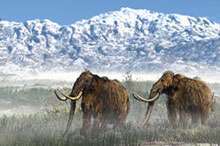No products in the cart.
The Ancient Lake

Lifeblood of Shoshone and Bannock Ancestors
By Lael “Suzann” Hendrikson
Photos courtesy of Idaho National Laboratory
If you think archaeology is about retrieving golden trophies from snake-filled caves, I’m here to say it’s more interesting than that. Take, for example, 890 square miles on the Snake River Plain, which holds information from thirteen thousand years of occupation by the Shoshone and Bannock people and their ancestors. If the Indiana Jones film image of archaeology persists, it’s probably because we archaeologists aren’t as good as we could be at sharing our stories with the public—which I think are better than any of Indiana’s yarns.
For the past three years, I’ve worked for Idaho National Laboratory’s (INL) Cultural Resource Management Office, which is responsible for the cultural integrity of the Snake River acreage. This vast area has been off limits to the public for nearly seventy years, which makes it an archaeological treasure. Archaeology on the eastern Snake River Plain dates back to the 1930s, but our story really begins in the 1950s, the same time the Atomic Energy Commission started building the reactors. That was when archaeology’s focus shifted from the collection of artifacts (goodbye, Lara Croft, Tomb Raider!) to the study of people and how they survived over thousands of years on an ever-changing landscape.
Fur trappers began showing up there in the early 19th Century, followed by pioneers and homesteaders. In the first half of the 20th Century, the land became a proving ground for the U.S. Navy, where warship gun barrels that had been relined and re-rifled in Pocatello were brought to be tested. It was a bombing test range during World War II, and in 1949, the Atomic Energy Commission (AEC) selected it as the site for the National Reactor Testing Station.
This content is available for purchase. Please select from available options.
Register & Purchase Purchase Only
Register & Purchase Purchase Only


Comments are closed.